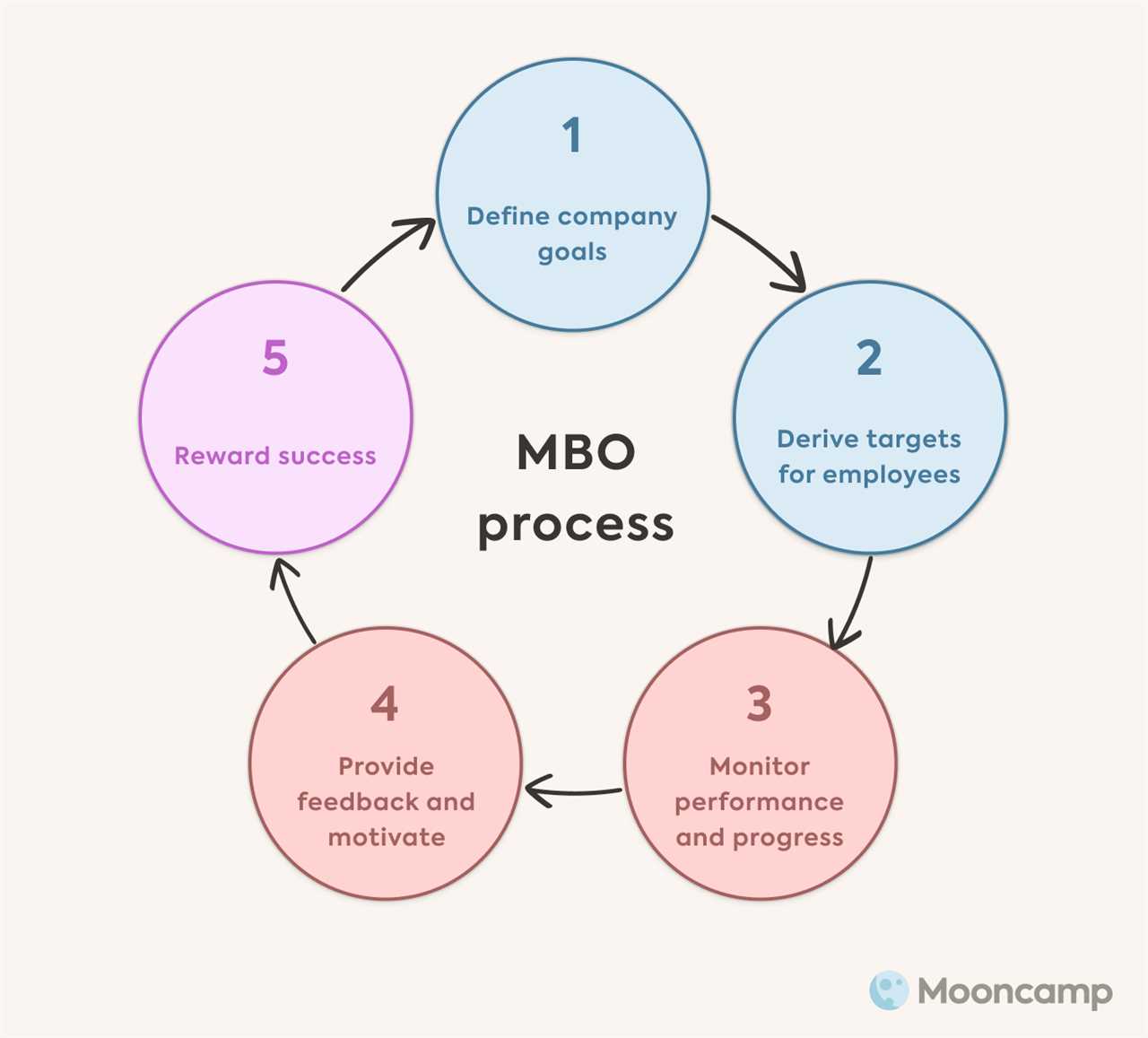Management by Objectives (MBO): 5 Steps
Management by Objectives (MBO) is a goal-setting and performance management approach that helps organizations align individual goals with the overall objectives of the company. By implementing MBO, businesses can improve communication, increase employee engagement, and enhance overall organizational performance.
There are five key steps involved in the MBO process:
- Step 1: Setting Clear Objectives
- Step 2: Aligning Objectives with Organizational Goals
- Step 3: Establishing Key Performance Indicators (KPIs)
Once the objectives are set and aligned, it is important to establish key performance indicators (KPIs) to measure progress towards those objectives. KPIs are quantifiable metrics that help track performance and determine whether the objectives are being achieved. By establishing KPIs, organizations can monitor progress, identify areas for improvement, and make necessary adjustments to ensure success.
By following these five steps of MBO, organizations can create a clear and structured approach to goal-setting and performance management. This not only enhances employee engagement and motivation but also improves overall organizational performance.
Step 1: Setting Clear Objectives
Setting clear objectives is the first step in implementing the Management by Objectives (MBO) approach. This step involves defining specific and measurable goals that employees need to achieve within a certain timeframe. Clear objectives provide employees with a clear direction and purpose, aligning their efforts with the overall goals of the organization.
Why is setting clear objectives important?
Setting clear objectives is important for several reasons:
- Focus and direction: Clear objectives help employees focus their efforts on what needs to be accomplished. They provide a sense of direction and purpose, ensuring that everyone is working towards a common goal.
- Measurability: Clear objectives are measurable, which means that progress can be tracked and evaluated. This allows managers to assess performance and identify areas for improvement.
- Alignment: Clear objectives help align individual goals with the overall goals of the organization. When employees understand how their objectives contribute to the success of the organization, they are more likely to work towards achieving them.
How to set clear objectives?
Setting clear objectives involves the following steps:
- Define the desired outcome: Clearly define what needs to be achieved. The objective should be specific and measurable, so that progress can be tracked.
- Set a timeframe: Determine the timeframe within which the objective needs to be achieved. This helps create a sense of urgency and ensures that progress is being made.
- Communicate the objectives: Clearly communicate the objectives to employees. This ensures that everyone is on the same page and understands what needs to be accomplished.
- Provide support and resources: Ensure that employees have the necessary support and resources to achieve the objectives. This may include training, tools, or additional staff.
- Monitor and evaluate: Continuously monitor progress towards the objectives and evaluate performance. This allows for adjustments to be made if necessary and ensures that the objectives are being achieved.
By following these steps, organizations can set clear objectives that provide employees with a clear direction and purpose. This helps align individual efforts with the overall goals of the organization and contributes to its success.
Step 4: Monitoring and Evaluating Progress
Once the objectives have been set and aligned with the organizational goals, it is important to continuously monitor and evaluate the progress towards achieving those objectives. This step is crucial in ensuring that the desired outcomes are being achieved and any necessary adjustments can be made along the way.
Monitoring progress involves regularly tracking the key performance indicators (KPIs) that were established in the previous step. These KPIs serve as measurable targets that indicate whether the objectives are being met or not. By monitoring these indicators, managers can identify any deviations from the desired outcomes and take corrective actions if needed.
Evaluating progress is the process of assessing the overall performance and effectiveness of the objectives. This can be done through various methods such as performance reviews, feedback from employees, and analyzing data and metrics. The evaluation should focus on whether the objectives are contributing to the overall success of the organization and if any adjustments need to be made.
Monitoring and evaluating progress should be an ongoing process throughout the duration of the objectives. Regular check-ins and updates should be conducted to ensure that everyone is aware of the progress being made and any challenges that may arise. This allows for timely adjustments and interventions to be made, increasing the likelihood of achieving the desired outcomes.
Step 3: Establishing Key Performance Indicators (KPIs)

Once clear objectives have been set and aligned with organizational goals, the next step in the Management by Objectives (MBO) process is to establish Key Performance Indicators (KPIs). KPIs are measurable indicators that help track progress towards achieving objectives and provide a way to evaluate performance.
When establishing KPIs, it is important to consider the specific objectives that have been set. Each objective should have one or more corresponding KPIs that can effectively measure progress and success. KPIs should be specific, measurable, achievable, relevant, and time-bound (SMART).
When establishing KPIs, it is important to involve the individuals or teams responsible for achieving the objectives. This ensures that the KPIs are relevant and meaningful to those who will be working towards them. By involving employees in the process, managers can also increase engagement and motivation, as individuals are more likely to be committed to goals they have helped set.
It is also important to regularly review and update KPIs as needed. As objectives and priorities may change over time, KPIs should be adjusted accordingly. This allows for a flexible and adaptive approach to performance management, ensuring that KPIs remain relevant and effective.

Emily Bibb simplifies finance through bestselling books and articles, bridging complex concepts for everyday understanding. Engaging audiences via social media, she shares insights for financial success. Active in seminars and philanthropy, Bibb aims to create a more financially informed society, driven by her passion for empowering others.
